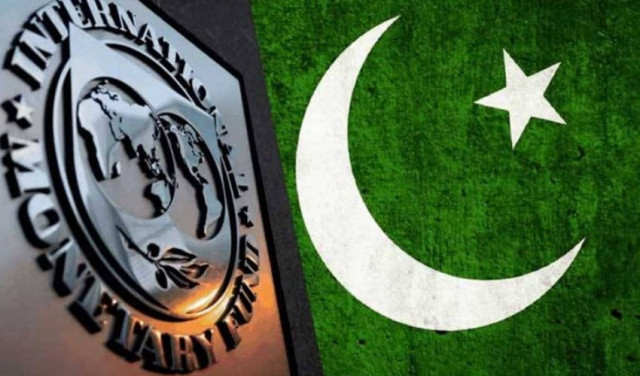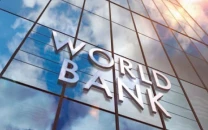New IMF facility: more of the same
If structural constraints remain unaddressed, Pakistan may seek another loan

Following approval of the $7 billion Extended Fund Facility (EFF) by the International Monetary Fund (IMF), Pakistan has received the first tranche amounting to $1 billion. Immediately thereafter, the exchange value of the rupee registered an uptick, as the IMF loan will also make it easier to borrow both multilaterally and bilaterally.
According to the fund, the new three-year credit programme will require "sound policies and reforms" to support Pakistan government's efforts "to strengthen macroeconomic stability, address deep structural challenges, and create conditions for a stronger, more inclusive, and resilient growth." At the same time, the IMF cautions, Pakistan's vulnerabilities and structural challenges remain formidable.
The new EFF follows the IMF-sponsored nine-month standby arrangement (SBA) for Pakistan, which expired last fiscal year. Two logical questions that arise are: Why Pakistan had to seek back-to-back IMF credit facilities? And is there a way out of the IMF loans?
The fundamental flaw in IMF programmes, no matter which name they're given, is that they address the symptoms, not the disease. That's the reason despite being a regular customer of the fund since the 1960s, Pakistan continues to depend on it to bail out the economy.
A credit programme is like a social safety net. Each provides a short-term respite and for a while creates the impression that things are beginning to look up.
In the long run, however, both credit and income support programmes must create conditions whereby the beneficiaries don't have to subscribe to them. This is the ultimate touchstone by which the efficacy of each should be judged. However, each begets a sense of complacency, which helps perpetuate the recipient's dependence.
Pakistan signed back-to-back programmes with the IMF in 1988 and 1993. Called structural adjustment programmes, the lending arrangements made Pakistan open up its economy thoroughly for which neither the economic managers nor the domestic industry was prepared.
From 225% in 1988-89, the maximum applied import tariffs were slashed to 100% by 1992-93. Average applied tariffs, which were 91% in 1992-93, were scaled down to 51% by 1995-96.
The tariff cuts pushed the domestic industry to face increased foreign competition without developing its capability to do so, thus putting the economy on the track of premature de-industrialisation from which it has not yet recovered.
Premature de-industrialisation refers to an aberration in a country's economic journey when the share of manufacturing in total output begins to decline without reaching full-scale industrial development. The services sector grows disproportionately, but because it is not backed by industrial development, it lacks competitiveness and sophistication.
In the case of Pakistan, the manufacturing-to-GDP ratio, which was 15% on average during the 1990s, fell to 12% and 13% respectively over the following two decades. At present, manufacturing accounts for only 11% of the total economic output.
In a country facing de-industrialisation, export growth tends to fall well behind import growth, as the demand for manufactured goods outstrips their supply. In our case, a high birth rate, which well exceeded non-labour resource expansion, made matters worse.
At the end of FY23, exports and imports made up 8.1% and 16.2% of gross domestic product (GDP), respectively.
As a result, trade deficit or external imbalance has remained a perennial feature of the economy, forcing the country to borrow abroad each year to bridge the yawning import-export gap and thus keep running the external debt. The debt servicing obligation makes the government go back to the IMF.
A flexible or market-based exchange rate, which forms an integral part of the IMF's recipe or conditionalities, invariably causes the rupee to depreciate on account of trade deficit.
The higher the export-import gap, the greater is the value the rupee sheds. This not only stokes inflationary pressures in an import-dependent economy but adds to economic uncertainty as well.
Such a situation creates a fertile ground for both capital flight and switching funds from the productive to speculative ventures, thus further accentuating the supply-side constraints and adding to import demand.
To check the general price increase, the central bank jacks up interest rate, which discourages business borrowing and investment, and makes the supply-side situation even worse.
Another option for the government is to bring down imports through administrative measures, such as import bans and hike in import taxes. However, in an import-dependent economy like Pakistan, such measures are unsustainable and end up slowing down the pace of economic growth.
Hence, having registered 6.2% growth in fiscal year 2021-22 (FY22), the economy contracted 0.2% in FY23 and grew only 2.4% in FY24 on the back of import compression policies.
As a result of such constraints, Pakistan's economy remains in a double bind. In the event that it registers lacklustre growth, as it has done over the last two years, it will not be able to create enough jobs for its 70 million-plus and growing labour force.
In case the economy grows at a moderately healthy rate of 5% or above, as it did in FY22, the growth pace will exacerbate external imbalances mainly in the form of galloping imports, and drive up prices exorbitantly, making economic expansion difficult to sustain and necessitating growth compression measures.
Just as receiving a cheque under a social safety net makes the beneficiaries feel good, the receipt of funds from the IMF, which are followed by loans from other multilateral institutions and countries, and their immediate impact on the exchange rate and foreign currency reserves makes the government and its supporters euphoric. But this euphoria soon fizzles out.
This is for the reason that the credit addresses only the symptoms - falling domestic currency and depleting foreign exchange reserves - and not the disease that underlies those symptoms - a corporate sector that thrives on subsidies and tax evasions and whose core competence consists of production of substandard goods, which can't be sold in foreign markets, low labour productivity because of low wages and lack of human capital development, diversion of investment from the real to the realty sector, a high birth rate, an inefficient civil service, and above all lack of entrepreneurship or willingness to take abnormal risks and venture into new areas or new ways of doing business.
In 1947, textile was the mainstay of the national economy. In 77 years, the world has changed but we remain a textile-driven economy managed by well-entrenched but risk-averse family-based businesses facilitated by short-sighted political interests.
In case the structural economic constraints remain unaddressed, it is highly likely that after three years, another IMF programme will be in sight.
The writer is an Islamabad-based columnist




















COMMENTS (1)
Comments are moderated and generally will be posted if they are on-topic and not abusive.
For more information, please see our Comments FAQ